Last week I posted about how the Foot plays a huge roll in the health of the entire system of joints above it.
I then received several emails and messages from you lot asking, nay, demanding more information.
So here’s a really cool video for you showing how the foot and ankle complex moves when loaded and unloaded, ie in pronation and supination
I don’t know about you, but watching that clip gives my inner geek a real warm fuzzy feeling…
Now, watch it again, particularly around the 1min 40 ish part where you get a front view of the foot Pronatining (flattening) and Supinating (arching).
See how that yellow bar marking the angle of the ankle (say that 10 time out loud, go on, I dare you, “Angle of the ankle, angle of the angkle, angle of the angle, ankle of angle…..ARgh!!!”)
Do you notice that as the foot pronates the ankle inwardly rotates, ie that bar swings over toward the big toe side of the foot, and when it supinates, it swings back out towards the middle?
No?
Watch it again.
If that line swings towards the big to side, what are the Tibia and Fibular bones of the low leg doing?
Well, as they sit on top of the SubTalar Joint (which that yellow bar is showing the motion of) then they must turn too. The Sub Talar Joint (STJ) is also everting, ie the top end in falling inwards to wards the midline.
What is on top of that?
hang on, lets sing…
“the hip bones connected to the leg bone, the leg bones connected to the knee bone, the knee bone is connected to the shin bone…….”
Aye, the low leg bones inwardly rotate and angle in.
The knee bone, well that’s not really a thing, but the leg bone or in geek, the “Femur”, must also inwardly rotate and angle into wards the midline.
But the knee moving towards the midline is bad for you…….
Is it though?
What if I said to you the best way to load both the Glutes and the VMO is by allowing the femur to internally rotate and the knee to come intowards the midline?
Stand up and slip of your shoes, put one leg forwards while keeping both feet pointing straight forwards.
Be sure to keep your weight on the three points of the tripod, ie the heel, pinky toes knuckle and big toe knuckle, don’t grip with the toes. The back foot will have just the front two points on the floor and the heel slightly lifted.
Now bend the front knee bringing all your weight into the front foot, keep the tripod in contact with the floor.
Your hip ought to move out, the knee will seem to move in and the foot will pronate.
Where do you feel the muscle tension?
Now think about those fancy running shoes you just bought with the arch support, or those orthotics you have in your day shoes.
Think about when you grip the floor with your toes to tension the foot.
Think about when you force the knee to track out as you squat or lunge.
All these things prevent proper action in those important joints in the foot.
Now, this all came as a bit of surprise to me as for about 25 years I’ve been gripping with my toes and driving my knees out during martial arts training. Then many years later I read people advocating similar strategies for strength training.
In fact, for many years I coached the gripping of the floor for people struggling with single leg exercises. And guess what, I’ve been wrong.
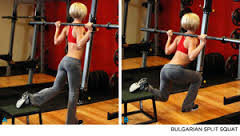
Bulgarian Split Squat, I USED to advocate gripping with the toes, but false stability, is no stability
It was studying the Anatomy in Motion course under Gary Ward and Chris Sritharan that highlighted just how wrong.
Gripping will prevent the foot from pronating, which prevents the eversion of the STJ and the all the movement associated with it.
Essentially you become unable to load the glutes fully.
What about in a bilateral stance, ie a squat?
This question has bothered me for a while.
A while ago there was a big online debate from some Oly lifting coaches arguing that the knees moving towards each other, ie towards valgus, is the optimal way to squat. A huge hoo-ha which was fun to watch and listen to, mostly between the crowd behind the Supple Leopard and the Chinese Olympic Lifting community.
In Starretts book, he demonstrates a huge push out with the knees while squatting and deadlifting. I suppose that’s the problem with still shots as opposed to video, but in his book I do think he does over do it.
Is he right or are they right?
Well he’s since apparently softened his opinion on the knees out thing, but not to the degree the Chinese are talking about. Maybe they’re both right.
One thing I will say is that the knees should be out in the bottom position of a squat or deadlift, this gives you space for them to come in without going into dangerous territory, especially while under serious load.
As you press the feet into the floor, they will pronate, the low leg will move inwards, the femur will internally rotate and the quads and glutes will fire like champions.
I’ve been experimenting with my own squat, deadlift and kettlebell jerk training.
And when I bring my attention to the proper motion in the foot, I feel the quads light up and the glutes offering far more support as the femurs inwardly rotate than when actively push the knees out.
We’re certainly not talking letting the knees buckle in to a dangerous degree shifting the force to the medial structures of the joint. That’d be very, very wrong. But if the knee were to track the STJ as the foot pronates, which as you see from the video clip, isn’t the same as tracking the middle toe, this will require some valgus at the knee joint.
Am I correct?
I’ll not say for definite, I’ll leave that up to you to figure it out for yourselves.
But what I will stress is, train in barefoot or in the most minimal footwear you can get away with in the gym.
I don’t advocate barefoot running, but I absolutely advocate barefoot squatting.
If you squat for athletic performance reasons, use a hip to shoulder width stance, and feel for that internal rotation of the femur and how the quads load better for it.
Feel it on the first dip of a jerk
If the quads and glutes are working as a team and fully activating, then the knee joint and low back will be under less stress.
Does this mean no more knackered knees?
Come to Dolan Fitness in Tullamore on June 7th and ask me.
I’ll be teaching a 1 day Kettlebell/Bodyweight workshop, but will be taking questions, a lot of questions over the day.
We can talk about foot mechanics and will definately talk breathing.
Contact Keiran on info@dolanfitness.com for booking details.
Regards
Dave Hedges
http://www.WG-Fit.com

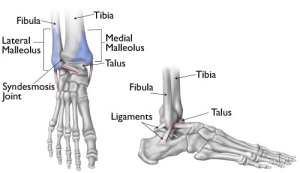
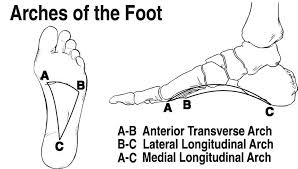
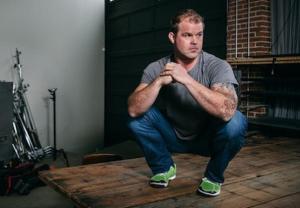
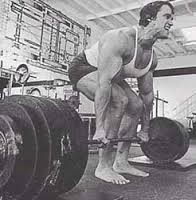
Anyway we could get a video of what that looks like in practice?
What, the movement I describe?
You’re better of getting up, slipping off your shoes and feeling for it. Start with establishing the tripod of the three points on the floor and go up from there.